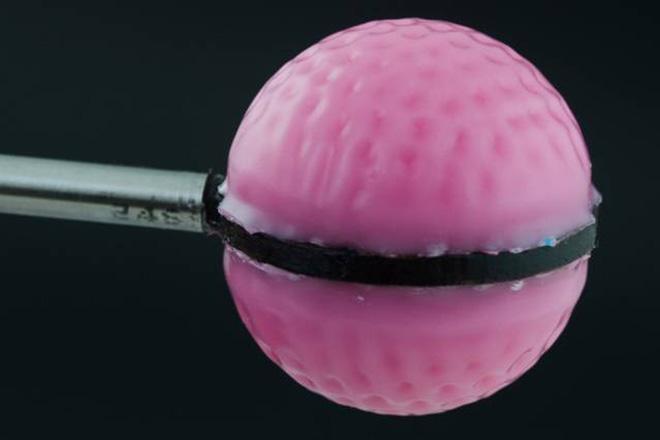
Wired brings us fantastic information about an adaptive morphing material created by MIT researchers that may change the automotive industry, more specifically the aerodynamic division.
What MIT’s scientists have created is something called a smart morphable surface (smorph), which is essentially a hollow polymer sphere that looks like a bubble gum-colored golf ball.
The smorph’s outer shell changes in shape relative to the air pressure inside its hollow core. At normal pressure, the smorph is relatively smooth, but when a vacuum is created inside, dimples form, making it look very much like a Titleist dunked in Pepto Bismol.
Why does this matter and how does it apply to cars? It’s all in the dimples, my friends.
On a golf ball, the dimples act as “turbulators”, creating a boundary layer of air around the sphere. Because the surrounding air doesn’t cling to the turbulent barrier very well, it actually reduces drag, allowing you to hit longer drives at the fairway.
If smorphs were strategically placed on a car, it could theoretically adjust its aerodynamics by creating or removing dimples on the fly, depending on driving speed and surrounding conditions.
Pedro Reis, an MIT mechanical engineer and the smorph’s lead inventor, explains.
“What our system lets you do is tune the drag between the two extremes,” he said. At low speeds, a vehicle’s surface would dimple, reducing drag. At high speeds, it would smoothen, because the turbulent sheath functions best when the object is moving slower.
It may be hard to imagine how smorphs would fit into a modern vehicle’s styling, but the benefits could be endless: better fuel efficiency, increased acceleration, and decreased drag.
A slippery surface like a smorph could lessen the need for sound-deadening materials as well, allowing future cars to be lighter, cheaper, and again, more economical.
Smorphs are still in the developmental stages, but Reis, who won a National Science Foundation grant this year, can see a future where smorphs are implemented on aircraft, skyscrapers, and all types of ground vehicles. A squishy, dimply future.


